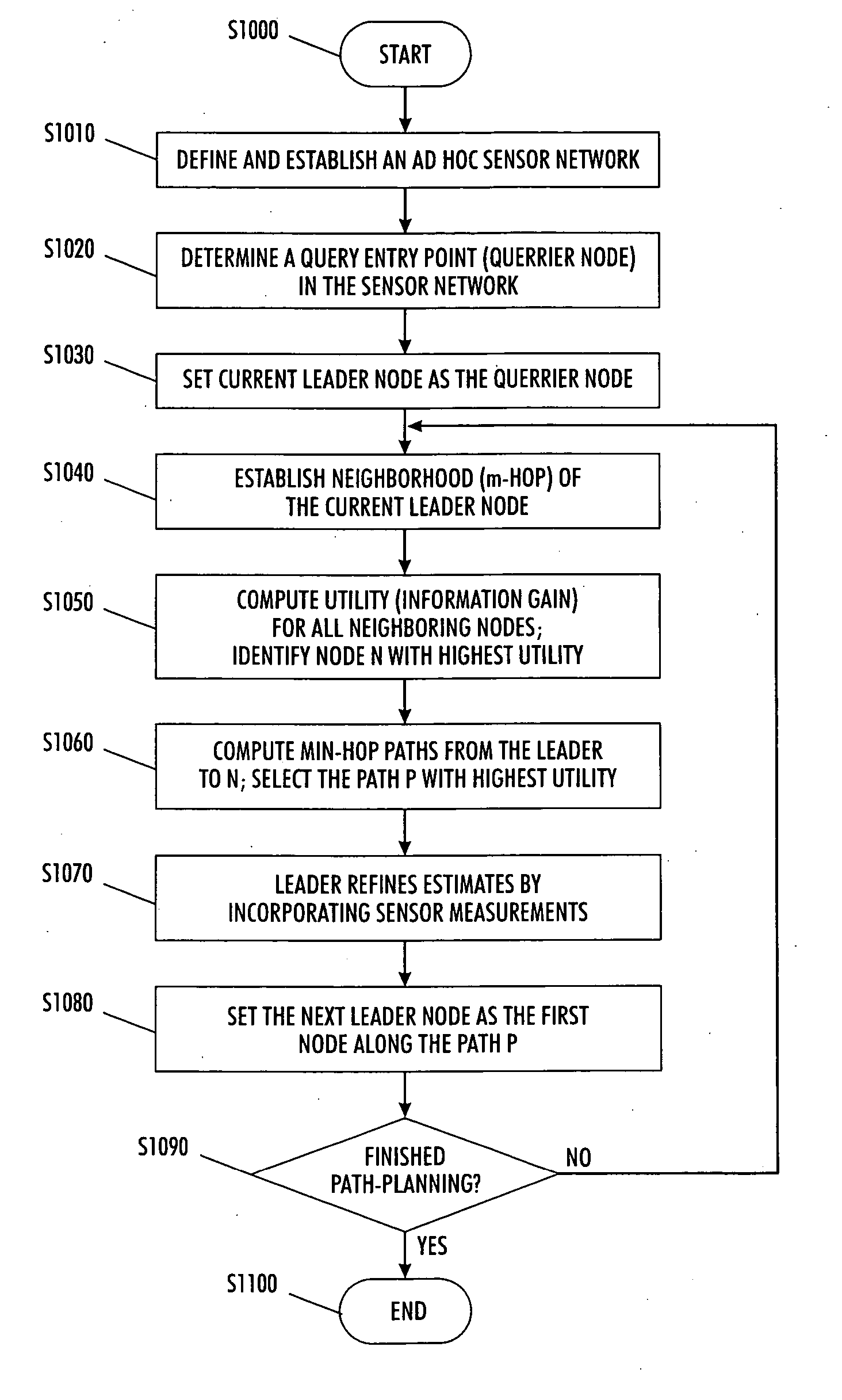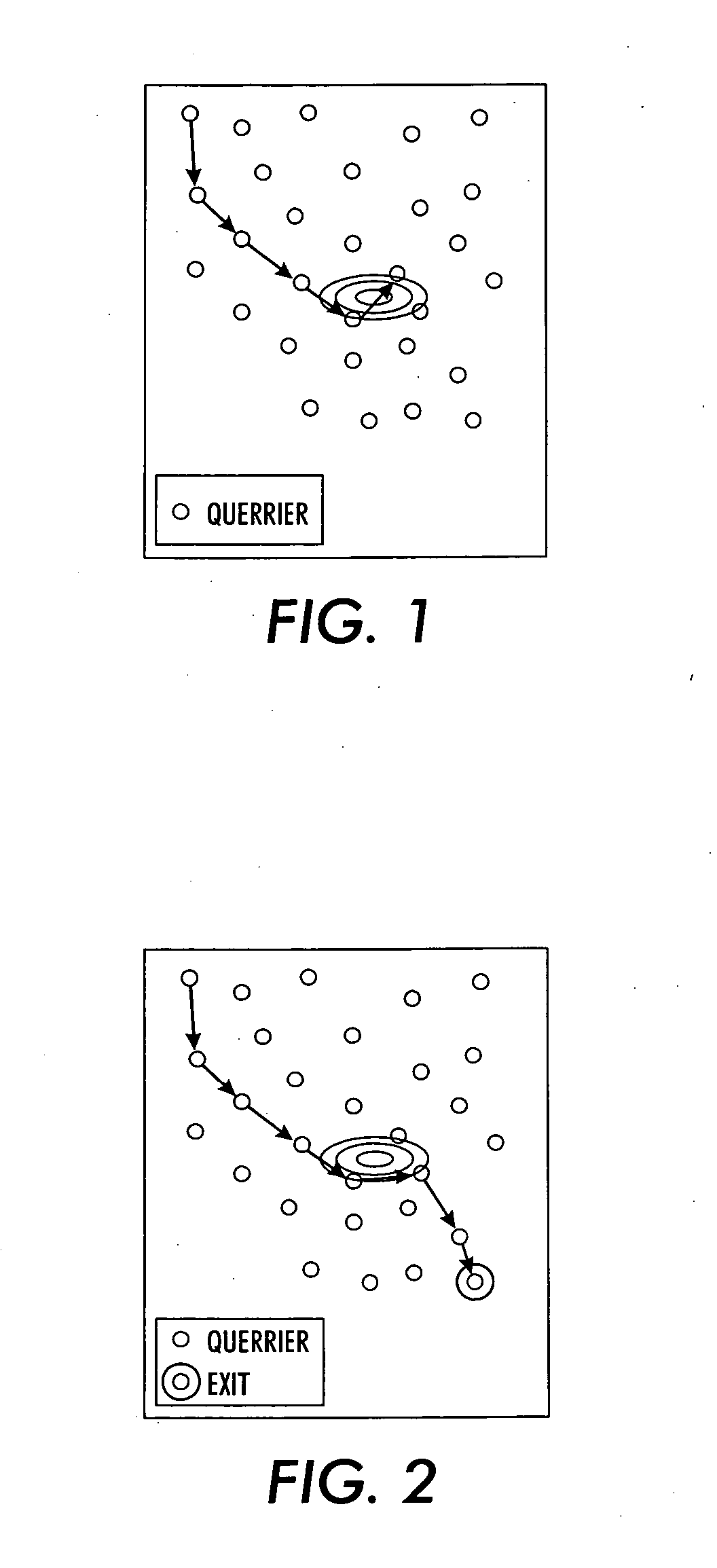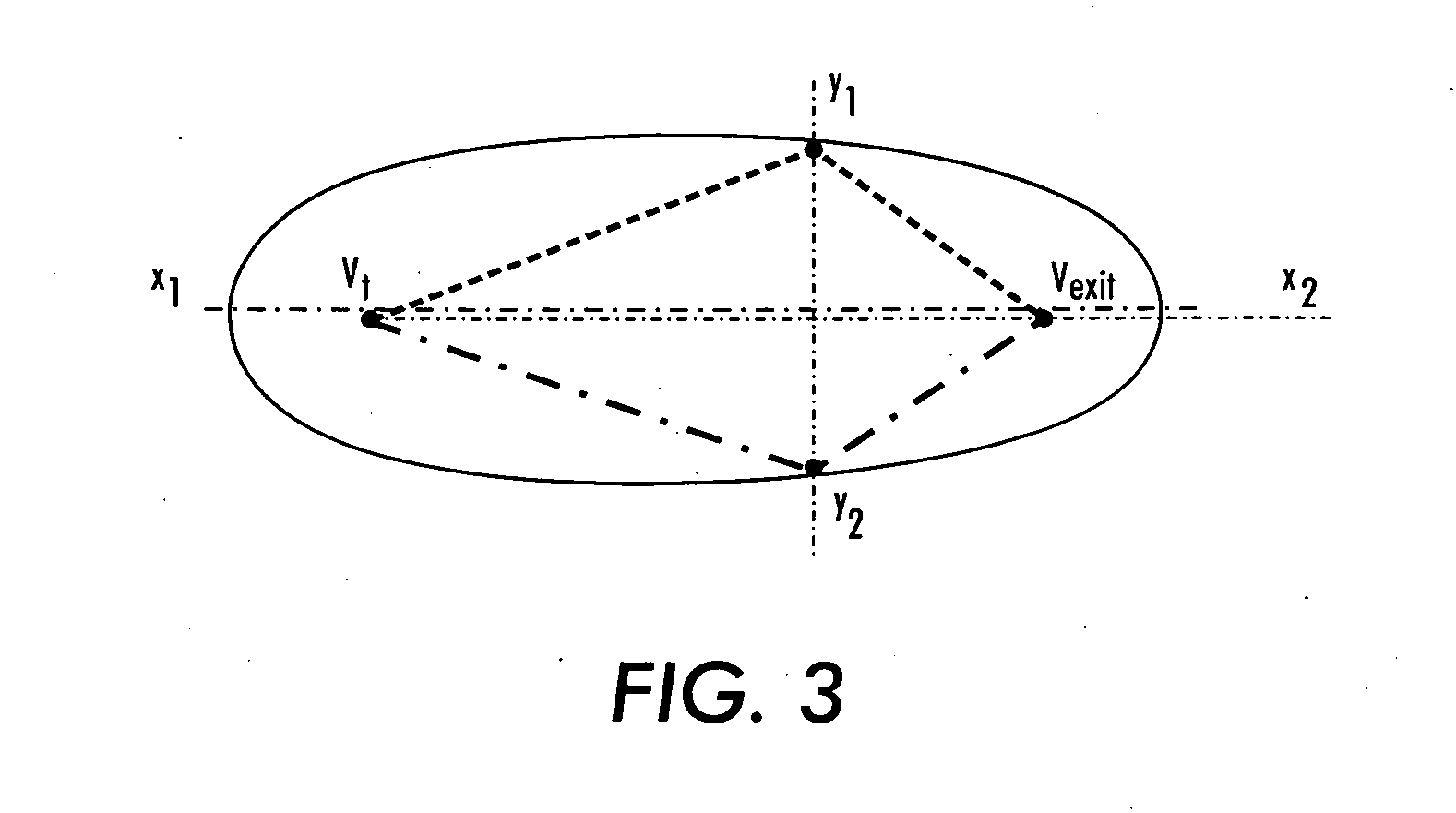Information driven routing in ad hoc sensor networks
a sensor network and information technology, applied in data switching networks, instruments, frequency-division multiplexes, etc., can solve problems such as information aggregation coupled with information, and achieve the effect of improving performan
- Summary
- Abstract
- Description
- Claims
- Application Information
AI Technical Summary
Benefits of technology
Problems solved by technology
Method used
Image
Examples
Embodiment Construction
[0031] The invention describes a method to formulate the routing problem in ad hoc sensor networks, namely information-directed routing, which selects path which is both efficient in terms of communication cost but aggregates substantially information about the phenomenon of interest. One exemplary embodiment that involves a target estimation problem is tracking a target in a physical location domain, such as a two dimensional plane. Under the circumstances of this exemplary embodiment, it would be useful to transport a message and at the same time refine the target location estimate. This problem may be formulated as seeking a path in a network graph G=(V, E), where V are the collection of vertices, essentially the sensor nodes, and E are the edges, representing the connectivity in the network. The result path, denoted as (v1, v2, . . . , vT), where v1, v2, . . . , vT are the vertices visited by the path in order, should be optimal in minimizing the total cost The total cost may be...
PUM
 Login to View More
Login to View More Abstract
Description
Claims
Application Information
 Login to View More
Login to View More - R&D
- Intellectual Property
- Life Sciences
- Materials
- Tech Scout
- Unparalleled Data Quality
- Higher Quality Content
- 60% Fewer Hallucinations
Browse by: Latest US Patents, China's latest patents, Technical Efficacy Thesaurus, Application Domain, Technology Topic, Popular Technical Reports.
© 2025 PatSnap. All rights reserved.Legal|Privacy policy|Modern Slavery Act Transparency Statement|Sitemap|About US| Contact US: help@patsnap.com



